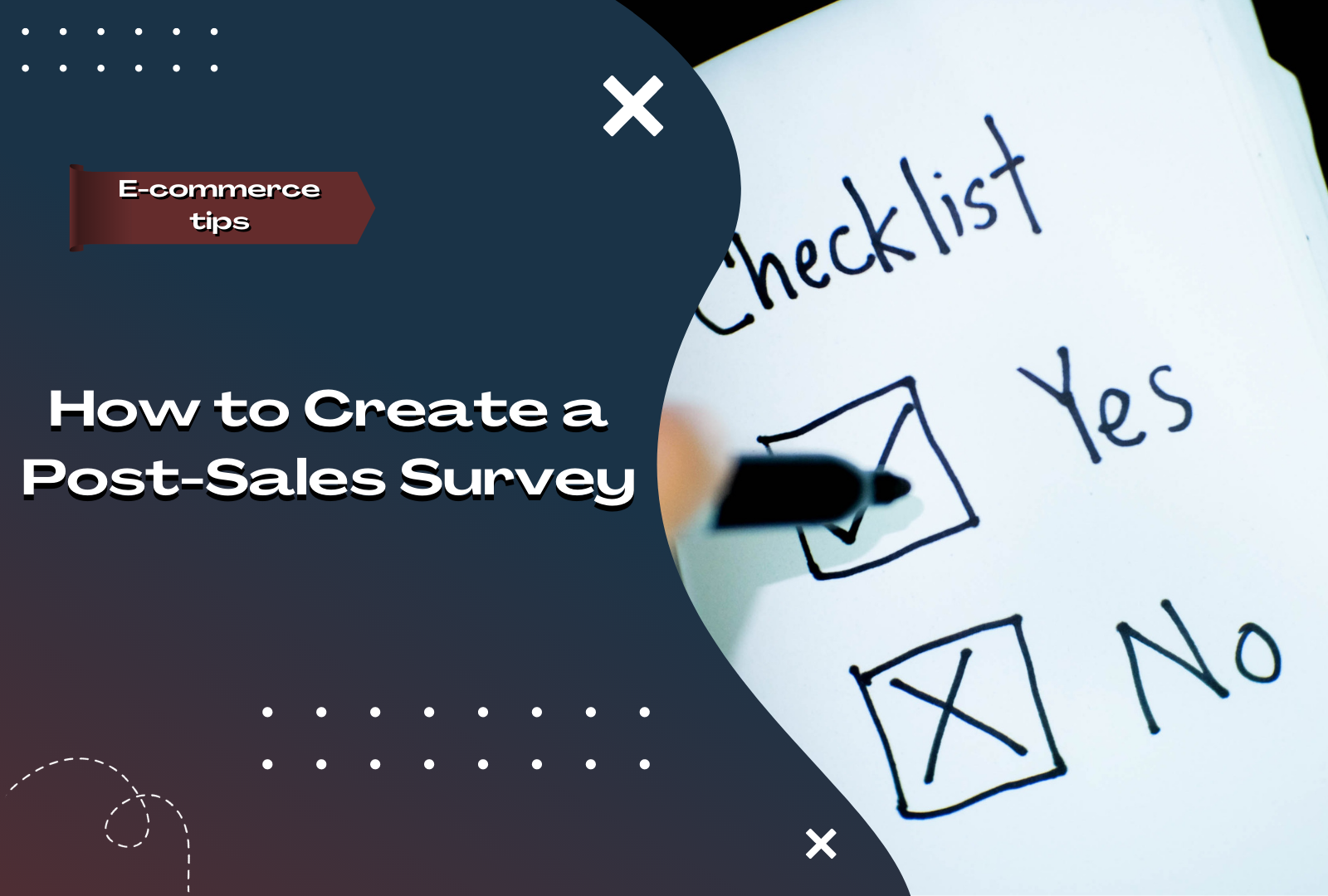How to Create a Post-Sales Survey
Customer relationships don’t end after completing a transaction. In reality, it’s only the beginning of constant nurturing to acquire a loyal consumer base. The after-sales experience plays a crucial role in generating repeat business. And to optimize that, you need to craft a compelling post-sales survey.
Post-sales surveys provide valuable information on how customers feel about their buying experience. After all, one of the main priorities for every business is guaranteeing customer satisfaction. Getting a pulse from your customers allows you to highlight issues and rectify them before they become recurring problems.
The question is, how do you create a post-sale survey that works? Keep reading to obtain insights that will shape your customer service!
1. Identify your goals
The first thing you need to do is to identify your goals for your post-sales survey. What kind of information do you want to obtain from your customers? Perhaps you’re testing a new website theme and want to know how user-friendly it is. Or, you want to launch a new product and want input from your customers to meet their needs/expectations.
Some common objectives for post-sales surveys include:
- Highlight areas for improvement.
- Discover levels of customer satisfaction.
- Track data changes over time.
- Discover opportunities for cross-selling/upselling.
- Measure consumer interest in upcoming products/services.
After you plan your goal, the next step is to formulate the questions that go into your post-sales survey.
2. Use open-ended questions to draw detailed responses
When creating a post-sales survey, you want to obtain detailed customer responses. One way to achieve this is to use open-ended questions that allow customers to communicate their feelings and provide meaningful insights into your brand. Some examples of open-ended questions include:
- How would you describe your shopping experience?
- What do you like most about our product?
- How can we improve our service?
Open-ended questions are great for surveying loyal customers since they’re more likely to make detailed inputs than new ones. You can also use them to conduct preliminary research (e.g. when testing a new product or service) and gauge how your customers feel. At most, try to include at least 2-3 open-ended questions in your survey to keep them short and sweet.
3. Get straight to the point
To maximize the effectiveness of your post-sales survey, you want to keep it short and sweet. Focus on the main goal and obtain customer information with only 3 to 5 questions. Doing so will help encourage customers to finish the survey and give detailed responses to each question.
The last thing you want is to craft a post-sales survey that’s more than a page long. Not everyone has the time to sit down and answer a lengthy form for 5 minutes, especially when the customer has had an unsatisfactory experience.
Along with open-ended questions, you can also use closed-ended questions to create your surveys. These questions allow customers to answer with a ‘Yes’ or ‘No’ and make it easier for them to complete the survey.
Some examples of closed-ended questions include:
- Were you satisfied with your purchase?
- Would you recommend this product to other people?
It’s a good idea to use closed-ended questions when surveying large groups to gain quantitative data. You can also use rating scales to help determine subjective sentiments like satisfaction, perception, experience, and more.

4. Present the survey in real-time
Post-sales surveys make the most sense when the customer’s shopping experience is still fresh. You want to take advantage of their recent interaction with your brand to get emotional responses. If they’re satisfied with their purchase, you will know immediately. If not, they’ll be more than willing to share the reason.
There are a couple of ways you can present your surveys. One is to use pop-ups right after completing the transaction. Pop-up surveys are quick data capture forms you can use to obtain bits of information from your customers. Another method is to send survey forms to your email list to acquire in-depth answers.
Some brands prefer placing surveys right after the checkout page to obtain more accurate feedback. Response rates will vary depending on your chosen medium, so make sure to experiment and see which ones work best for your customers.
5. Personalize your surveys
Each segment of your customer base will have unique interactions with your brand, meaning no post-sales survey works as a one-size-fits-all solution. Personalization is key to making your surveys more effective, as customers will find the same questions repetitive and a nuisance.
For example, if you want to survey existing customers, you may want to ask, “Are you interested in joining our loyalty program?” or give an introduction like “As a highly valued customer”. You also want to adapt your post-sales survey according to consumer behavior to help you get more detailed insights.
6. Maintain brand consistency
Make no mistake; post-sales surveys are more than just a series of questions. The design aspect also plays a role in how customers perceive surveys as a genuine part of your brand. With that said, you want to maintain consistency throughout your customer touchpoints, including feedback forms.
The forms should encompass your brand by using its logo and colors. This helps replicate the same experience customers feel when interacting with your business. Most importantly, the voice and tone of the message should connect with your customers to encourage an emotional response. Maintain brand consistency, and your surveys will be much more effective.
7. Use CRM software to send your surveys
Now that you have your post-sales survey prepared, the last step is to implement it efficiently. Setting up surveys manually is a time-consuming task, especially for small businesses. The good news is you can use customer relationship management (CRM) software with integrated survey tools to make the process easier.
For example, HubSpot’s survey hub lets you create and send feedback forms in various formats like long-form surveys, customer satisfaction scores, customer effort scores, and more. Of course, the software supports automation tools for better productivity and simplicity. It’s definitely worth taking a look at if it’s your first time building a post-sales survey.
Conclusion
Post-sales surveys are a critical part of building long-lasting relationships with customers. They provide a wealth of information that you can use to make sound business decisions. Hopefully, this article provides you with everything you need to build a post-sales survey that works best for your brand’s customers.
Managing the financial health of your company is essential to maintaining profitability. If you need any help with expert bookkeeping services, our team is ready to assist you. Simply fill out the form below, and our team will contact you shortly.








